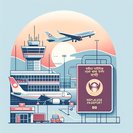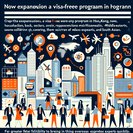
Cathay Pacific confirmed on 15 November that it will resume non-stop service between Seattle-Tacoma International Airport (SEA) and Hong Kong on 30 March 2026 after a multi-year pandemic suspension. Flights will operate five times per week using Airbus A350-900 aircraft featuring lie-flat business-class suites, premium-economy seating and inflight Wi-Fi.
The restart is part of a broader wave of 2026 international route launches highlighted by Condé Nast Traveler. For Hong Kong, the return of the Pacific-Northwest link restores direct access to a tech-heavy catchment that includes Amazon, Microsoft, Boeing and a large Chinese-diaspora community—key demand drivers for premium cabins and air cargo.
![Cathay Pacific to restore five-weekly Seattle–Hong Kong flights from March 2026]()
Corporate-travel analysts predict the route will shave four to six hours off one-stop itineraries that currently hub through Vancouver or San Francisco. It will also give West-Coast exporters faster belly-hold capacity for high-value semiconductors and perishables destined for Asian supply chains.
Cathay’s rebuilding of its North American network comes as the airline targets 100 percent of pre-COVID passenger capacity by the end of 2025. The carrier has already restored frequencies to Vancouver and Los Angeles and will add daily Riyadh flights in October 2025, underscoring management’s confidence in demand recovery.
Travel managers should watch for promotional corporate agreements in Q1 2026 and factor Cathay’s premium-economy product into policy benchmarking, as it often prices 20–30 percent below fully flexible business class while still offering a recliner seat and priority check-in.
The restart is part of a broader wave of 2026 international route launches highlighted by Condé Nast Traveler. For Hong Kong, the return of the Pacific-Northwest link restores direct access to a tech-heavy catchment that includes Amazon, Microsoft, Boeing and a large Chinese-diaspora community—key demand drivers for premium cabins and air cargo.

Corporate-travel analysts predict the route will shave four to six hours off one-stop itineraries that currently hub through Vancouver or San Francisco. It will also give West-Coast exporters faster belly-hold capacity for high-value semiconductors and perishables destined for Asian supply chains.
Cathay’s rebuilding of its North American network comes as the airline targets 100 percent of pre-COVID passenger capacity by the end of 2025. The carrier has already restored frequencies to Vancouver and Los Angeles and will add daily Riyadh flights in October 2025, underscoring management’s confidence in demand recovery.
Travel managers should watch for promotional corporate agreements in Q1 2026 and factor Cathay’s premium-economy product into policy benchmarking, as it often prices 20–30 percent below fully flexible business class while still offering a recliner seat and priority check-in.






